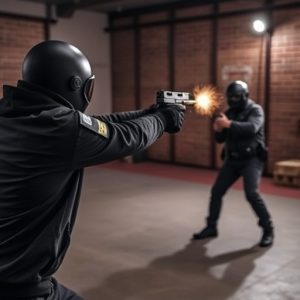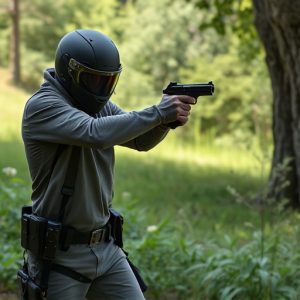Unraveling Stun Gun Safety: Spread Pattern Analysis & Quality Pricing
Understanding electrical current spread patterns in devices like stun guns is crucial for engineers…….
Understanding electrical current spread patterns in devices like stun guns is crucial for engineers and consumers alike. This knowledge impacts pricing, safety, and performance, with advanced analysis methods including simulations and experiments. Reputable brands offer various models within specific price ranges, from basic $50 options to high-end $300+ units featuring enhanced power, safety features, and durability. Accurate assessment helps in selecting stun guns that balance effectiveness, reliability, and affordability based on individual needs and budget constraints.
Electrical current spread patterns play a critical role in understanding the performance of stun guns, ensuring safety, and maximizing effectiveness during deployments. This article delves into the intricate world of these patterns, offering insights into their analysis. We explore the impact of stun gun design, highlighting key considerations for manufacturers while navigating the diverse market landscape. Additionally, we dissect pricing factors for quality stun guns within various price ranges, empowering consumers to make informed decisions.
- Understanding Electrical Current Spread Patterns
- The Role of Stun Guns and Their Design Considerations
- Pricing Factors for Quality Stun Guns
- Analysis Methods for Assessing Safety and Effectiveness
Understanding Electrical Current Spread Patterns

Understanding Electrical Current Spread Patterns is crucial in various applications, including the evaluation and design of electrical devices, especially those that utilize high-voltage systems. By analyzing how current flows through different materials, engineers can predict and optimize performance, ensuring safety and efficiency. This becomes particularly relevant when considering the impact on conductivity, resistance, and insulation properties, which directly influence the spread of electricity.
In the context of personal safety devices like stun guns, understanding these patterns is essential. For instance, knowing how current spreads through a stun gun’s contacts to the target can help determine the optimal design for maximum shock effectiveness while minimizing energy waste. Moreover, it allows manufacturers to set appropriate price ranges for quality stun guns, balancing performance, reliability, and affordability based on the specific current spread dynamics they achieve.
The Role of Stun Guns and Their Design Considerations

Stun guns, also known as electronic control devices (ECDs), play a significant role in personal safety and self-defense strategies. Their primary function is to temporarily incapacitate an assailant by delivering a powerful electrical shock, allowing the user to escape or gain time for assistance. The design considerations for stun guns are critical, encompassing both effectiveness and safety. Modern stun guns employ advanced technology, such as high-voltage, low-amperage electrical circuits, ensuring a strong jolt while minimizing potential harm to the user.
When evaluating stun guns, the price range for quality models is an essential factor. While higher-priced options often boast enhanced features and durability, there are reputable brands offering effective stun guns within affordable price ranges. Key design elements include electrode placement, power sources (rechargeable vs. disposable), and safety mechanisms to prevent accidental activation. Understanding these aspects can empower individuals to choose a stun gun that suits their needs and budget while ensuring personal security.
Pricing Factors for Quality Stun Guns

When considering a purchase, understanding the pricing factors for quality stun guns is paramount. These devices vary widely in cost, typically reflecting their power output, design features, and build quality. High-end models often boast higher voltage ratings and more advanced safety mechanisms, which contribute to a premium price tag. Moreover, materials used—such as durable polymers or metal construction—and additional features like LED lights or multiple firing modes can significantly impact the final cost.
The price range for quality stun guns starts from around $50 for basic models, offering essential protection. Mid-range options, with enhanced performance and more advanced safety features, typically fall between $100 and $200. At the top end, high-performance stun guns can cost $300 or more, catering to users who demand the highest level of protection and reliability in a compact, powerful device.
Analysis Methods for Assessing Safety and Effectiveness

When evaluating the safety and effectiveness of electrical current spread patterns, various analysis methods are employed to ensure comprehensive understanding and risk mitigation. These methods include simulation models that predict the behavior of current flow through different materials and tissues, offering insights into potential harm or efficiency in applications like stun guns. By inputting variables such as voltage, resistance, and conductance, these simulations help design safer and more effective devices.
Additionally, experimental tests play a pivotal role, particularly in assessing real-world performance. Researchers conduct controlled studies to measure current distribution and its impact on various targets, providing data that inform design improvements. This is especially relevant for understanding the effectiveness and safety range of stun guns within different scenarios and price points, where higher quality models often command premium prices but may not necessarily offer significantly improved safety or performance compared to more affordable options.
Electrical current spread pattern analysis is crucial in understanding the safety and effectiveness of stun guns. By examining how current disperses, we can better appreciate the design considerations that go into these devices, particularly in relation to their pricing. In a competitive market with varying price ranges for quality stun guns, consumers must rely on robust analysis methods to make informed decisions. This includes evaluating both traditional and innovative assessment techniques, ensuring that the chosen stun gun offers optimal safety and reliability without compromising affordability.


